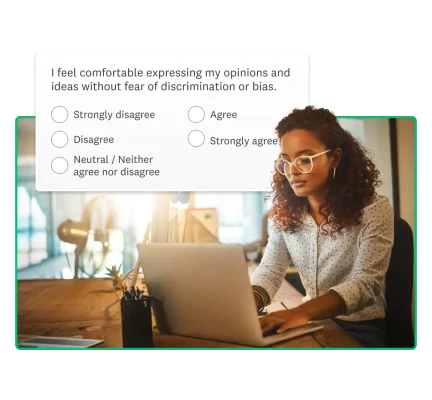Employee relations: What is it and how do you improve it?
Employee relations is important for organizational success. Learn how to build an employee relations strategy that helps your organization thrive.

Every successful organization shares one crucial foundation: strong relationships with its people. Whether you’re leading a startup or managing teams in a Fortune 500 company, the quality of your employee relations can mean the difference between thriving and surviving.
Employee relations (ER) shape workplace culture, drive productivity, and influence collaboration. Effective ER positively affects daily interactions and retention; ineffective ER negatively impacts all business aspects.
In this article, we’ll explore the concept of employee relations, why it matters, and how you can supercharge ER at your organization.
What is employee relations?
Employee relations is the sum of all interactions, policies, and practices that shape the relationship between an organization and its workforce. It goes far beyond basic HR policies or formal procedures — it's the dynamic that determines how employees and management work together to achieve shared goals.
Therefore, it’s also a crucial part of employee experience. ER impacts everything from workplace culture to employee morale to engagement.
What does employee relations involve?
As noted, employee relations encompasses many dynamic parts of the organization. Here are a few of the most important.
Job roles
- Employee relations specialists/managers focus on conflict resolution, employee advocacy, and ensuring fair treatment.
- HR business partners align employee relations strategies with business goals.
- Managers and supervisors are critical in maintaining open communication, resolving day-to-day issues, and encouraging team cohesion.
Overall responsibilities
- Conflict resolution: Addressing and mediating workplace disputes effectively and compassionately.
- Promoting diversity: Advocating for inclusivity and equitable opportunities.
- Employee well-being: Promoting mental health, work-life balance, and employee happiness.
- Compliance: Ensuring adherence to labor laws, policies, and ethical workplace practices.
Why is employee relations important?
Positive employee relations are critical for maintaining a healthy workplace culture. Strong ER is the foundation for organizational resilience, driving everything from innovation to bottom-line results. These are just a few of the many benefits.
Higher productivity
Strong employee relations foster collaboration and increase motivation. Employees in a company with positive ER are more likely to be productive. For example, companies that work to foster open communication often report greater efficiency than their counterparts.
Lower turnover
Positive ER leads to lower churn. The reason is simple: engaged employees are more likely to remain loyal. An effective ER strategy also helps reduce training, hiring, and recruitment costs.
Retention impact is critical. Our recent HR report reveals only 32% of HR professionals report their company is 'very successful' in addressing turnover. This gap shows the need for organizations to prioritize employee relations strategies.
Fewer conflicts
When a company boasts good employee relations, fewer problems arise in the workplace. Proactive ER management minimizes disputes. For instance, businesses that encourage frequent check-ins are less likely to see misunderstandings or miscommunication. Transparent policies are also helpful in reducing conflict.
5 ways to improve employee relations
Improving employee relations requires ongoing effort. It's not a one-time initiative but a continuous process of building trust and strengthening workplace relationships.
While every organization faces unique challenges, certain fundamental strategies consistently prove effective in enhancing ER across industries and company sizes. Use these five tips to get started.
1. Set the tone from their first day
Make sure you’re setting employees up for success on day one. Provide a positive training and onboarding experience to start building a relationship with your new hire. Welcome new employees with resources, support, and transparency.
2. Provide positive feedback
Employees thrive on feedback—but not just any feedback. The most effective recognition is specific, timely, and aligned with organizational values. Recognizing employees who perform well at work boosts individual morale and creates a ripple effect across the organization, encouraging positive behavior and setting clear examples of excellence.
Interested in starting an employee feedback program? Explore our HR quickstart guide.
3. Improve communication
Two-way communication between management and employees is vital for positive ER. Use tools like one-on-one meetings, team-building sessions, feedback forms, and surveys. The more communication touchpoints you create, the more you can ensure that every employee can share their thoughts and concerns comfortably.
4. Offer career development
Today’s employees are hungry for career development. Provide ample opportunities for them to grow in their role. Consider offering training programs, mentorship, and workshops. Employees who see a future at the company and that the company invests in their growth are more satisfied and engaged.
5. Invest in their well-being
Wellness programs, flexible work options, and work-life balance contribute to employee happiness. Companies that invest in employee happiness see considerable returns in the form of loyalty and productivity. Moreover, happy employees are brand ambassadors who will spread the word about your business.
Common employee relations issues and how to handle them
Pay disputes
To avoid and mitigate pay disputes, establish clear and transparent compensation structures as a core part of your employee relations strategy. Create well-documented salary bands, define clear raises and bonuses criteria, and ensure employees understand how their compensation aligns with their role, experience, and performance.
Discrimination
Effective discrimination prevention combines clear policies, proactive training, and accessible reporting systems. Start with comprehensive anti-discrimination policies clearly defining prohibited behaviors and consequences, written in straightforward language.
Use real-world scenarios to make unconscious bias training interactive and relevant. Use SurveyMonkey feedback tools to improve diversity, equity, and inclusion (DEI). You can gather anonymous reports of discriminatory behavior and measure the effectiveness of your training initiatives. This dual approach helps identify areas where employees need additional support while tracking broader workplace culture trends.
Harassment
Most workplaces have a zero-tolerance policy for harassment, but effective harassment prevention requires education, reporting, and enforcement. Start by establishing detailed policies that clearly define harassment in all its forms—from overt hostile behavior to more subtle forms of intimidation or unwanted attention.
Create multiple reporting channels, including direct supervisor contact, HR meetings, and anonymous options through SurveyMonkey confidential reporting tools.
Absenteeism
High absenteeism rates often signal deeper workplace or personal challenges that require a data-driven, empathetic approach.
Start by using SurveyMonkey pulse surveys and engagement templates to identify patterns and underlying causes. Are absences concentrated in specific departments? Do they correlate with high-stress periods or particular workplace policies?
How to track and resolve employee relations issues
Conduct regular check-ins
Consistent, structured check-ins are essential for maintaining strong employee relations, but the format and frequency of these check-ins matter as much as their existence.
Our research shows that organizations face significant challenges with meeting overload — 70% of meetings keep employees from completing productive work.
Encourage feedback loops
Maintaining positive ER is a two-way street. Establish continuous feedback mechanisms to gather insights into the effectiveness of your employee engagement initiatives.
Employees who feel valued and heard are more likely to communicate with management, strengthening relationships across the workplace.
Related reading: Building employee feedback loops for meaningful change
Use HR software
Leverage technology solutions to create a systematic, data-driven approach to employee relations. For example, SurveyMonkey HR solutions can help you:
Track and monitor:
- Deploy regular pulse surveys to identify emerging workplace issues
- Measure employee satisfaction across departments and teams
- Monitor the effectiveness of HR initiatives through pre- and post-implementation feedback
- Create customizable incident reporting forms for sensitive workplace matters
Streamline communication:
- Set up automated feedback collection after key employee milestones
- Use templates for common HR processes like onboarding and exit interviews
- Create anonymous feedback channels for sensitive issues
- Distribute and track important policy updates and acknowledgments
Analyze trends:
- Generate real-time reports on employee engagement metrics
- Track historical data to identify patterns in workplace issues
- Measure the impact of HR initiatives over time
- Compare feedback across different employee segments
Using software to streamline employee relations creates a centralized system that identifies issues early and provides data for informed workplace decisions.
Boost employee relations with SurveyMonkey
The way we work has fundamentally changed. Remote teams, flexible schedules, and digital collaboration have created new challenges for maintaining strong workplace relationships.
Yet the basics remain the same: employees need to feel heard, valued, and connected to do their best work.
That's where data matters. SurveyMonkey helps you understand what your employees actually need—not what you think they need. Our tools let you gather honest feedback, spot potential issues early, and measure the impact of your HR initiatives.
Ready to build stronger workplace relationships? Start with SurveyMonkey today.
Ready to get started?
Discover more resources

Attract, engage, and retain top talent with data-driven insights
Create powerful HR surveys with SurveyMonkey to gather feedback, boost engagement, and improve workplace culture. Streamline HR processes with customizable templates.

Why are surveys important in research?
Surveys are important in research because they offer a flexible and dependable method of gathering crucial data. Learn more today.

Job application surveys
Survey job applicants online to get a good understanding of your recruitment process strengths and weaknesses. Free templates and survey advice, sign up today!

HR Survey Questions: 80 Examples & Best Practices
Discover 80 HR survey questions, best practices, and tips for success to improve employee engagement.